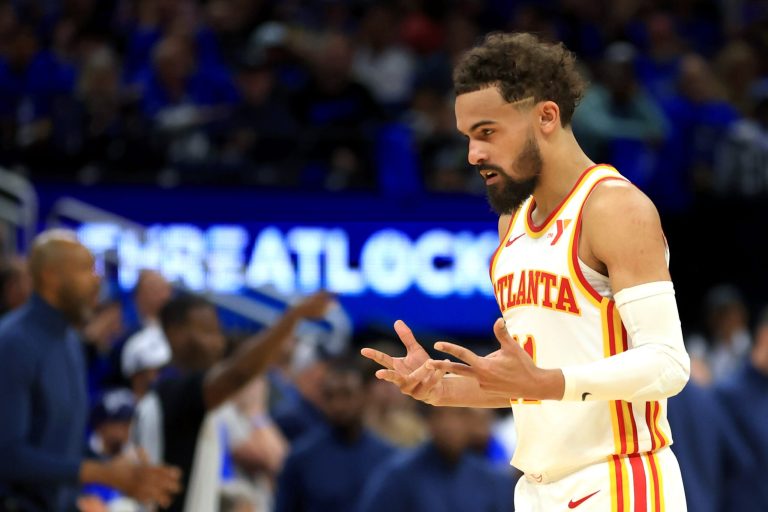69 days ago (yeah, yeah, I know, nice), Collingwood dealt Hawthorn a walloping that was meant to herald the Hawks’ slide out of premiership contention.
The Hawks won the inside 50 count that Friday night in late May, but were simply unable to score as a two-tall forward line of Jack Gunston and Mabior Chol was suffocated by Magpie pressure on the ball-carrier and a miserly defence that pulled in intercept marks galore.
The margin that night was 51 points. Collingwood sat atop the ladder at its conclusion, while the Hawks were just four premiership points inside the eight, had lost three games in a row, and had the critics coming from everywhere.
The path these two sides have taken in the last 69 days hasn’t always seemed to have diverged as spectacularly as it did on Thursday night, but what can’t be argued is the size, scope and sheer brutality of the turnaround.
To be specific, 115 points lay between that Hawks loss in May and the 64-point thrashing they handed a Pies team that has now officially lost its way, and its hold on a top-four berth that seemed unthinkable just a fortnight ago.
The Pies now have lost four of their last five, seem incapable of kicking a winning score – their 46 points against the Hawks is their lowest total under Craig McRae – and a once-fearsome backline is now leaking goals at an alarming rate to key forwards.
In short, they are right now where the Hawks were 69 days ago.
The reason for the devastation? Two key elements – ferocity at the contest, and height at either end of the ground.
The second part is largely due to Sam Mitchell’s decision last week, with his four key forwards all simultaneously fit for the first time this season, that playing all of them was a winning strategy for the Hawks.
Jack Gunston, Mabior Chol, Mitch Lewis and Calsher Dear isn’t a quartet that would have leapt off the page at the start of the season, or indeed six weeks ago, or indeed after they were a qualified success in a losing side to Adelaide six days ago.
But against a Pies team already vulnerable to the talls heading in, and made even more so by losing Jeremy Howe to concussion just a minute into the match, the Hawks ruled the skies supreme.
Back in Round 12, the Hawks mustered just 10 marks inside 50 for the full match – the exact same amount they reeled in in the second quarter alone this time around.
This was a complementary forward line structure working to devastating effect to decimate the Pies’ defence and leave them truly bereft of answers.
Very rarely did two talls fly for the same ball – the closest they came was Dear flying over a pack including Gunston for a monster mark just inside 50 in the second quarter. Even then, though, it was necessary to do so to deny Darcy Cameron the intercept mark he has taken countless times during the season, with Gunston battling with Darcy Moore, who expected up until the final seconds to only need to block the Hawks’ No.19 to ease Cameron’s way.
The reason the Hawks can afford to play all four is that all are mobile big men, and with different strings to their bow. Gunston is your classic lead-up forward, who has superbly made up for the yard of pace age has taken him with almost infinite footy smarts and an innate connection with the Hawks further up the field to always know exactly which pocket of space the ball is coming into.
Chol, meanwhile, is your classic stay at home focal point, except for when required to relieve in the ruck: by deep into the second quarter, no Hawk had been targeted inside 50 more. The best set shot of the foursome, and a nightmare match-up due to his sheer size, he robbed himself of a big bag with a pair of first-quarter misses from close range before the blowout became official.
Dear is the wildcard: that’s two games in a row he has been subbed out midway through the third quarter, but you’d be hard-pressed to say it was due to him being the least impressive of the talls. His best trait is his ability to almost make packs irrelevant – however many numbers he finds around him deep inside 50, his impressive vertical leap, aligned perfectly to a knack of consistently hitting the ball at his highest point, gives him almost Sam Darcy-esque reach.
Lewis, meanwhile, roamed further afield on Friday night than in his last few matches since returning to the side, allowing the Hawks a key marking target around the ground without leaving them shorthanded up forward.
Again, it’s smart management by Mitchell – four talls all inside 50 simultaneously isn’t really an option on slow plays unless you want to risk being dismantled at ground level on the turnover. Lewis relished the role, too, bringing down five marks, all but one outside 50, while his five inside 50s were equal-most of any Hawk.
But Mitchell had another monolithic ace up his sleeve: Lloyd Meek.

Lloyd Meek celebrates a goal. (Photo by Robert Cianflone/Getty Images)
Meek, for the most part, is your conventional if elite ruckman: not a noted goalkicker, he’s excellent around the ground as a bailout contested mark option, and combines quality tapwork with bullocking work at ground level.
Over the last six weeks before Thursday night, he has had a combined 10 disposals inside the Hawks’ attacking 50, only two of them from marks: mostly, he has sat outside 50 in the conventional ruck position, allowing his opposition big man to compete with a Chol or Dear at any ruck contests while setting himself to intercept.
For the last two weeks, though, he has tracked deep inside 50, looking to follow two of the game’s better intercepting rucks – Reilly O’Brien last week, Cameron this time around.
Meek had a goal on Thursday: make Cameron accountable. And so instead of having a mostly free run as the spare big man behind the ball at long kicks inside 50, the Pies star suddenly found himself being repeatedly outmarked.
Two of Meek’s three marks inside 50 of the night, leading to two of his three goals, came via remarkably similar second-quarter plays: long shots at goal falling just short, only for the big Hawk to rise higher than anyone else and bring it down.
50 inside 50s is just five more than they mustered last time against the Pies, yet their score was virtually doubled. During that second-quarter burst that killed the contest, at one point 10 Hawks inside 50s yielded nine marks, nine shots at goal, and six goals.
That’s efficiency dialled up to 11.
At the other end, it was a similar story, particularly early: the Pies drove the ball deep inside 50, and out it would come straight away, with James Sicily, Tom Barrass or Josh Battle bringing down intercept marks galore.
When these two teams last played, Sicily’s miserable form was the elephant in the room: he had just six disposals, only two intercepts, and barely did a thing right all night, to the point he spent the next few weeks on the sidelines rehabilitating niggling injuries that had all but destroyed him as a footballer.
He was already back to his best before the Pies rematch, but this was Sicily as he has been for most of the last three years: a general in defence, just about the best reader of the play in the business, and characteristically safe by foot, especially in setting up switch after switch.
It has taken until the final few rounds of the season for the backline to start working just as Mitchell surely intended when the Hawks recruited Barrass and Battle in last year’s trade period. That pair, Barrass in particular, helped blanket the Pies talls, with Brody Mihocek, Dan McStay and Tim Membrey combining for two marks inside 50 and three goals; crucially, their presence allows Sicily to roam free or at worst take a third tall and sag off.
It’s a brilliant combination, especially when the Hawks up the field put enough pressure on the Magpies ball-carriers to slow the play down dramatically, allow numbers to build up inside 50, and set up the slingshot perfectly for the age-wearied Pies to be ripped up on the counterattack.
For all that, though, there’s an inescapable, ugly truth out of Thursday night: the Pies put in an almighty howler.
You could tell it from virtually the first five minutes of game time, when Moore, for reasons known only to himself, tapped a bouncing ball straight into the path of Watson for the opening goal of the night.
Even before the Hawks’ talls took over, the Pies’ backs were all at sea against chaos balls coming in; Frampton looked every inch a man who hasn’t played senior footy in months, with a simply early dropped intercept mark opening the door for Watson’s second and compounding Moore’s earlier blunder.
The Hawks’ arsenal of talls left the Pies unable to predict where the ball was going, and to which contest, for virtually the whole night – Moore, meanwhile, was consistently forced to occupy one of the bigs, in the process dramatically restricting his intercepting ability and timely spoils coming late to contests, and exposing the one-on-one deficiencies that have plagued him and his club in recent weeks.
Even worse was to come early in the second half, epitomising the disconnect the Magpie defenders had from start to finish.
After Cameron, soundly beaten for much of the night, does his job to bring the ball to ground, albeit unable to mark thanks to Chol’s leap, no fewer than four Pies converge on the loose, bouncing ball. Yet they are all beaten for it by an unimpeded Watson, who hits the footy at full pace, taps it clear of traffic, and sets up a simple Jai Newcombe snap.
This would have been unthinkable for Collingwood a month ago.
With the ball, the Magpies were no better; Dan Houston, more prolific this time after a week dominated by criticism of his role throughout the year, basically confirmed his downfall this year is partly at least self-inflicted, with some of the worst kicking he has ever produced.
With Josh Daicos starting at centre bounces, and McRae imploring his troops heading in to take the game on more and avoid being ‘boring’, here was the perfect opportunity for Houston to dazzle, and with 11 first-quarter disposals there was a clear directive to bring him into the game where possible.
But his kicking typified the Magpies’ night: this cross-goal pass in the second quarter in particular to leak a goal a perfect example of a man who last year would have relished executing a lace-out kick to break through a defensive press and open up the ground, but who this year is reduced to a wobbly kick to a questionable contest to let in the goal that pretty much sealed the contest.
Across the second and third quarters, when the game was blown apart, 19 of the Pies’ 32 defensive 50 exits were intercepted by the Hawks, leading to six goals. It’s a turnover rate the Pies simply didn’t give up to start the season. It’s why they were belted by 64 points.
This time two years ago, the Hawks, then entrenched in the bottom four, stunned the ladder-leading Pies at the MCG for a victory that proved good times were fast approaching.
12 months ago, the Hawks smashed the Pies to smithereens in a game I likened to ships passing in the night, with the reigning premiers slumping out of September and Mitchell’s men en route to the semi finals.
Who knows what future this result will mean for these two teams, but 115 points doesn’t lie. The Hawks, many pundits’ tip to find themselves watching on in September, are peaking at the perfect time: the Pies, meanwhile, seem to have hit a reef.







